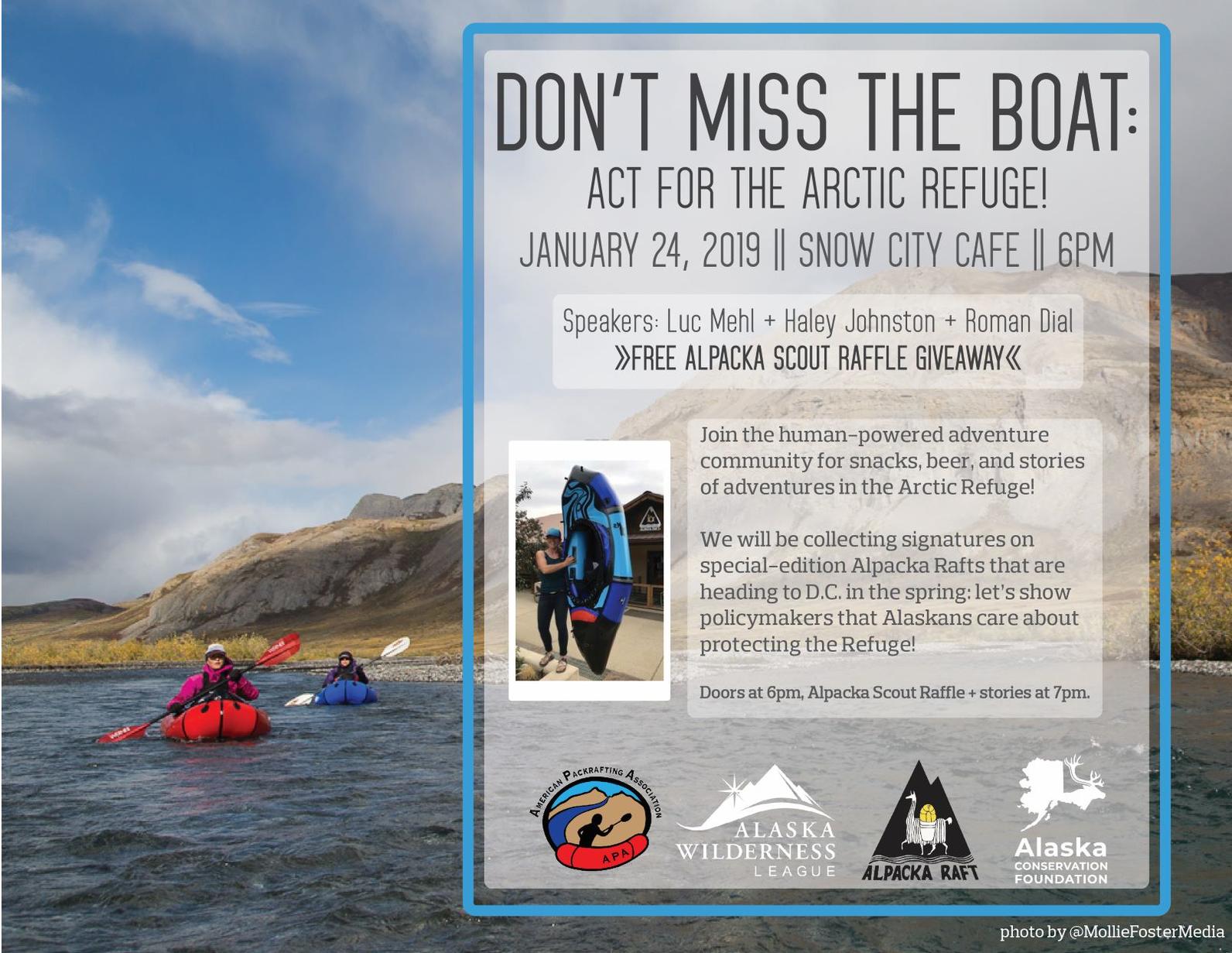This is the fifth in a series of blog posts by Ben Sullender, Spatial Ecologist at Audubon Alaska. Throughout the series, Ben shares his experiences and reflections from his recent 14-day, 200-mile adventure in the Arctic National Wildlife Refuge. He was joined by Sarah Glaser. The two of them set out from Arctic Village, hiking and paddling their way to the Arctic Ocean.
SPECIAL EVENT: Hear more stories of packrafting adventures through the Arctic Refuge at "Don't Miss the Boat" on January 24 in Anchorage. See details at the bottom of this post.
We scrambled down from the Arctic Continental Divide, cautiously side-hilling high above steep cliffs and zigzagging across a tall gorge. Eventually, the terrain leveled out and we eagerly eyed the widening stream in front of us. We were looking forward to finally getting to put our whitewater gear to use. After hauling our packrafts, lifejackets, helmets, paddles, and drysuits for over a week, it was time to inflate our boats, fill them with our gear, and let gravity do the work. We put in on an unnamed tributary a dozen or so miles past the Continental Divide. Threading through rocks and sharp corners, we made our way down to the Hulahula River (as the legend goes, named by commercial whalers yearning for Hawaii in the midst of a very different environment in the Arctic).
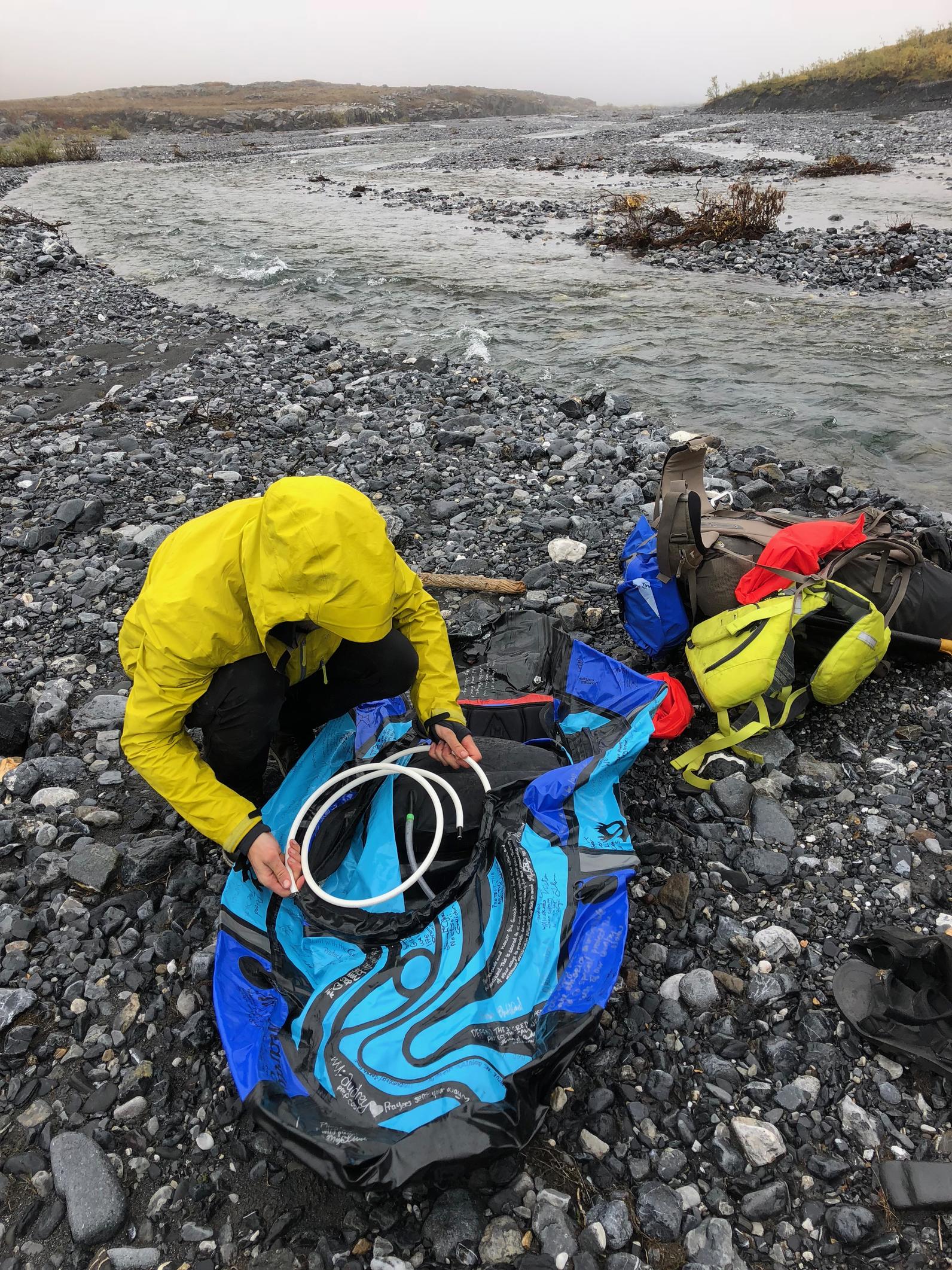
Soon after hopping into our packrafts, dark clouds crescendoed into a swirling snowstorm, and, after a few chilly miles, we took out to set up camp with numb fingers and chattering teeth. We awoke to an iced-over rainfly on our tent and drysuits frozen into place. Fortunately, the day dawned with a blue sky overhead, and the sun soon melted away the valley-floor fog and thawed our gear. The upper Hulahula valley was gorgeous, with caribou trails threading alongside the river banks and Dall sheep dotting the mountainsides. A few raptors circled high above, too far away for me to identify. We steadily floated our way downriver, enjoying the surroundings and the welcome respite from the rigors of hiking.
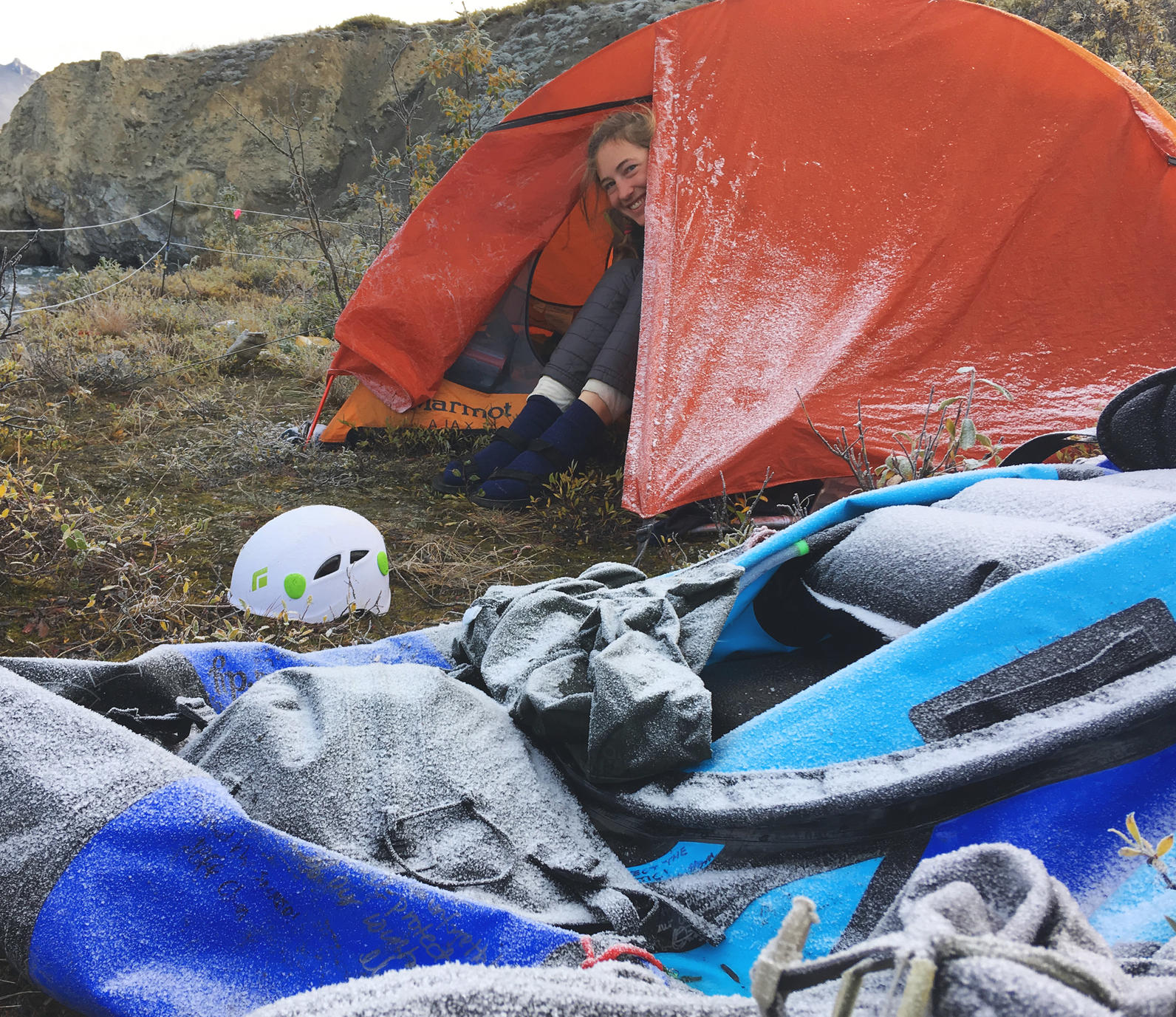
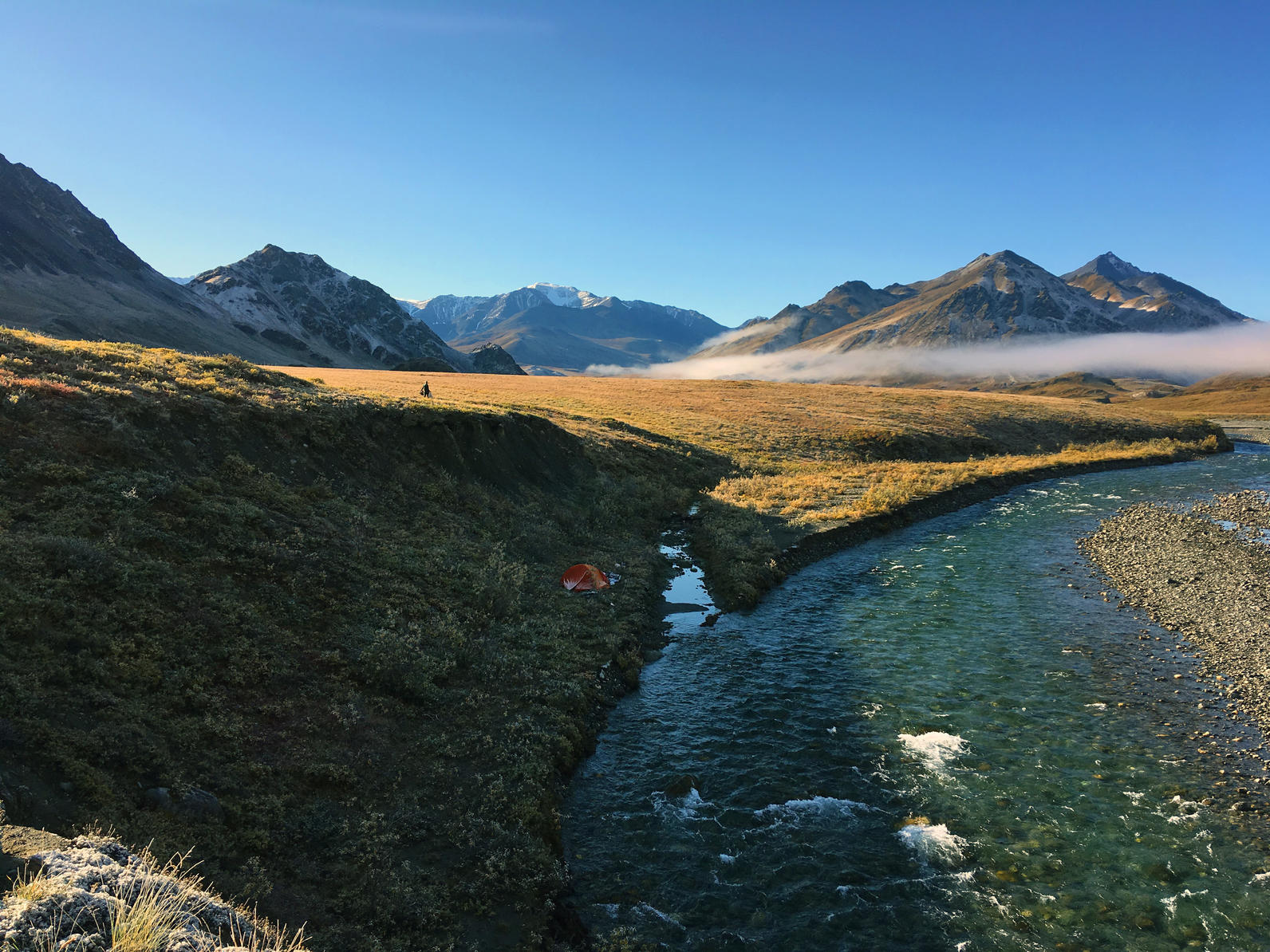
After a few days of leisurely drifting through this lovely landscape, we encountered the only other group we’d see on the entire trip, a very nice self-guided group from the Pacific Northwest. We pulled up to their camp, where they kindly brewed up some hot chocolate for us to share and pointed out a den of Arctic foxes they were observing from across the river. As rafters who use much larger watercraft, they were intrigued by our packrafts. When we explained the Arctic Refuge for All Americans campaign, they immediately added their messages to Mardy. I appreciated hearing from them, as non-Alaskans contributing a significant amount to our economy. Their trip was easily the highlight of the year for everyone involved, and their ability to raft all the way through the coastal plain was a key part of the Refuge’s appeal.
We somewhat reluctantly set down our hot chocolate and continued on. Sarah and I took turns paddling Mardy, the custom-made Alpackaraft that featured dozens of personal stories Sharpied on her sides and bow. The days blurred together. We camped on gravel bars and high on riverbanks; we were shaken awake late one night by an earthquake and startled awake another night when a ground squirrel found its way under the rainfly into our gear. We drifted lazily through placid flatwater and paddled furiously to navigate whitewater crashing through boulder gardens. We whooped our way through the Hulahula’s U-Bend Rapids, which, although usually Class III, were much more manageable due to low water levels.
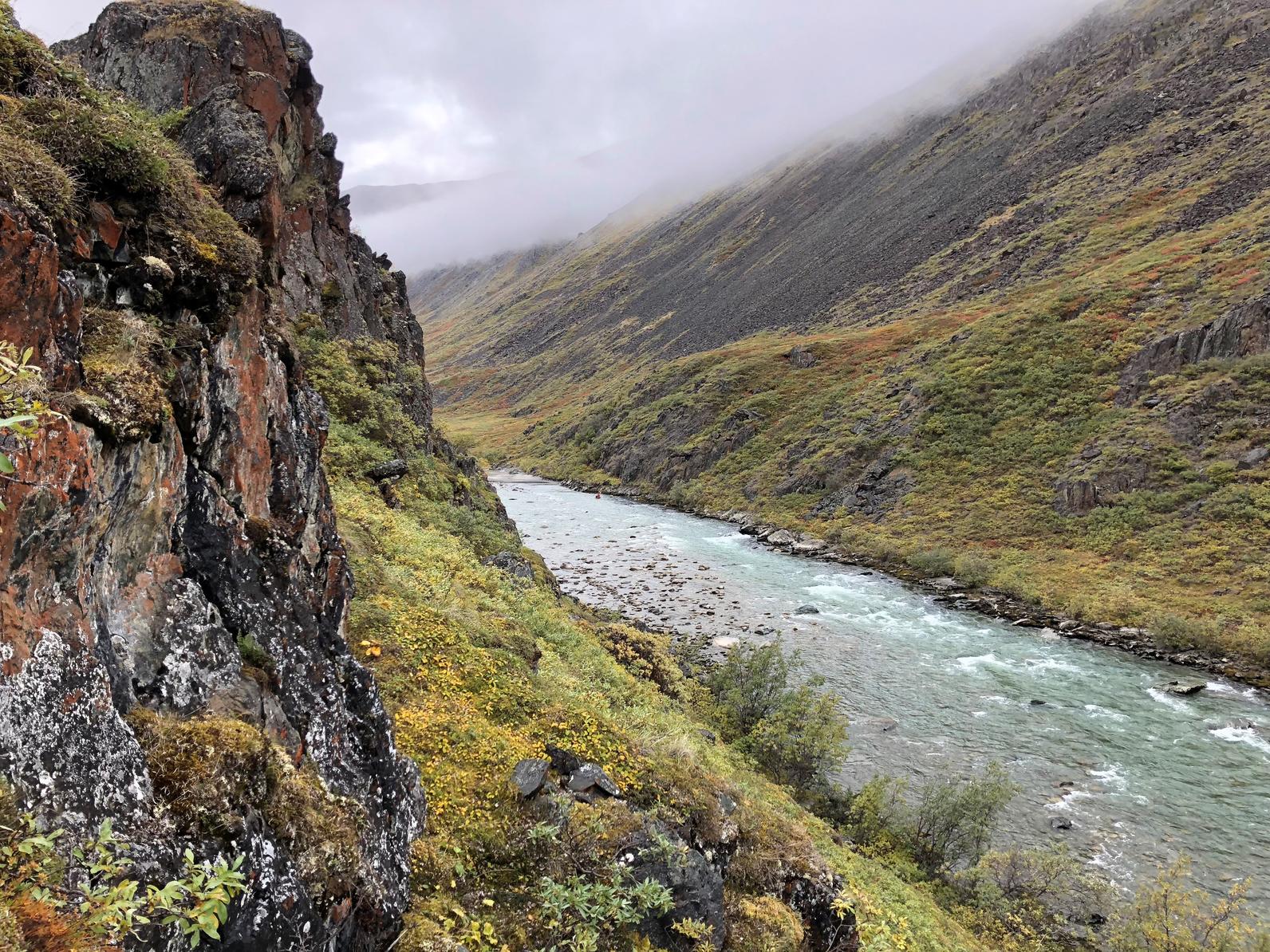
Eventually, we entered the Refuge’s portion of the Arctic coastal plain, also known as the 1002 Area. These are sacred grounds for the Gwitch’in, and known as the heart of the Refuge due to its importance for all types of life. Cows (female caribou) from the Porcupine Caribou Herd usually calve within this area, and the caribou herd provides food for wolves, bears, golden eagles, and wolverines throughout the entire Refuge over the course of their annual migration. Well over 100 species of birds have been observed on the Arctic coastal plain here, and dozens of bird species nest here, including globally significant abundances of American Golden-Plovers, Buff-breasted Sandpipers, and Pectoral Sandpipers. Although we’d arrived months after the caribou and nesting shorebirds had departed, the place was still very much alive.
The wetlands all around us were strewn with goose down, stray feathers, and droppings of all types. We noticed ground squirrels and an Arctic fox scurry for cover as they saw us approach in our neon drysuits and brightly colored boats. Individual or pairs of loons – likely Red-throated or Pacific Loons – periodically hurtled past us. As we paddled through the lower Hulahula and portaged to the Okpilak River, flocks of Snow Geese and Brant swirled overhead. These waterbirds use the 1002 Area in the fall as stopover habitat as they migrate from breeding grounds in the Canadian Arctic to wintering areas further south. And, of course, polar bears were due to start appearing around the coastal plain as soon as they made theirswitch from marine to coastal foraging strategies.
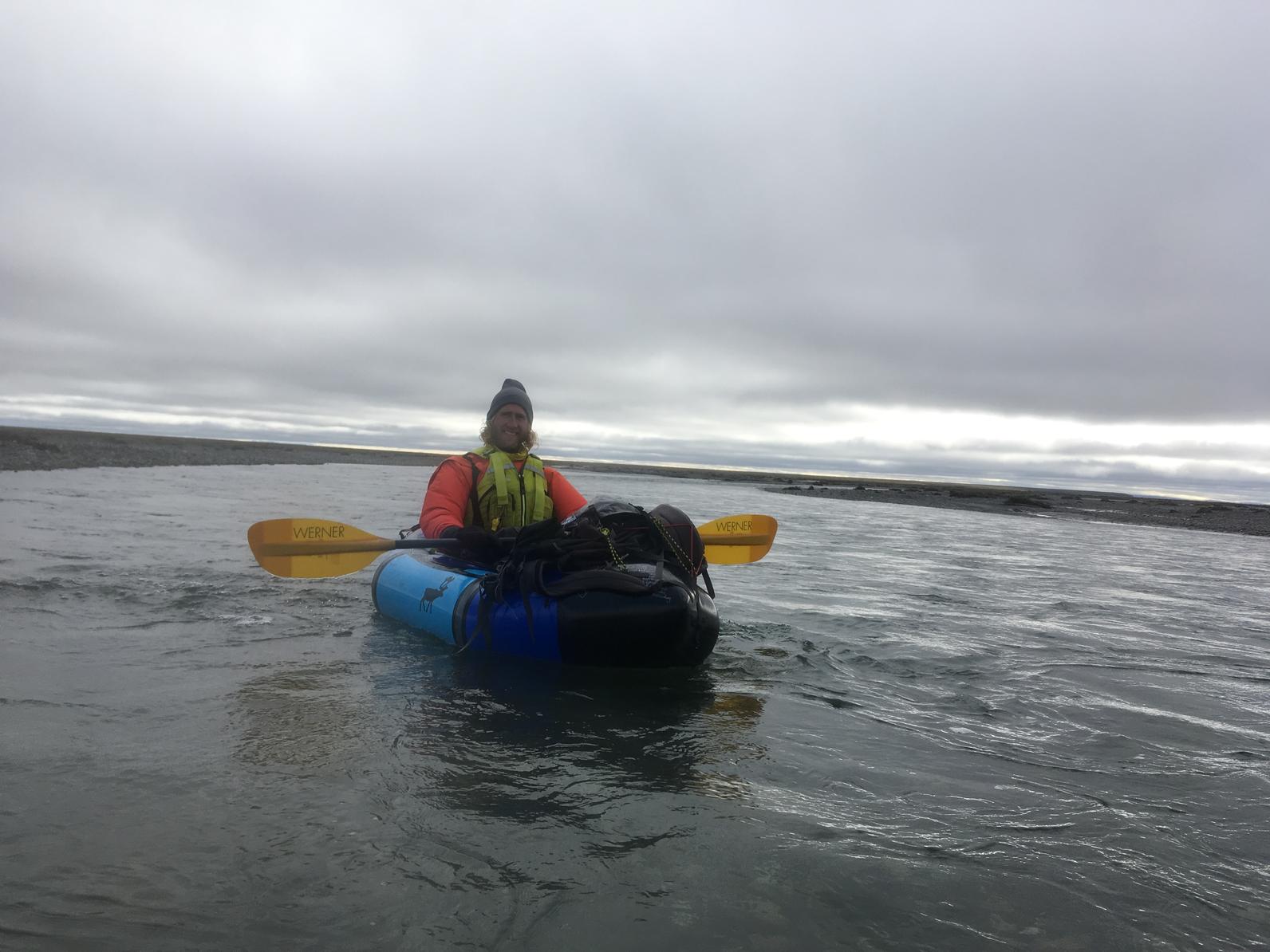
Fortunately, we made it to our boat pickup at Arey Island without incident. A quick, if bumpy, ride over the open-water Arctic Ocean whisked us into Kaktovik just before a storm blew in. Before we knew it, we were back in civilization and surrounded by houses, electricity, gravel roads, and people, too. The first wave of polar bear tourists and Refuge-focused journalists whose flights had been cancelled due to the storm. It was an abrupt transition from our two weeks of meandering through remote wilderness, but it felt good to talk through some of our memories and put what we’d seen in context.
The Arctic National Wildlife Refuge is a wild and wonderful place. It is important habitat for shorebirds, waterbirds, caribou, polar bears, and others. It is also siginificant to people. However, the Arctic Refuge’s protected status is under threat. Because of the passage of the tax bill in late 2017, the Arctic Refuge is no longer protected from oil and gas development. Now, the Trump administration is aggressively moving ahead with a plan to sell leases to oil companies on the pristine coastal plain. Learn more and discover how you can help protect this amazing place.
Read all of the blog posts in this series:
Arctic Refuge Ramble: Ben’s Journey across the Arctic National Wildlife Refuge
Arctic Refuge Ramble: Arctic Village
Arctic Refuge Ramble: Into the Wilderness
Arctic Refuge Ramble: Across the Arctic Divide
Arctic Refuge Ramble: The Arctic Coastal Plain
